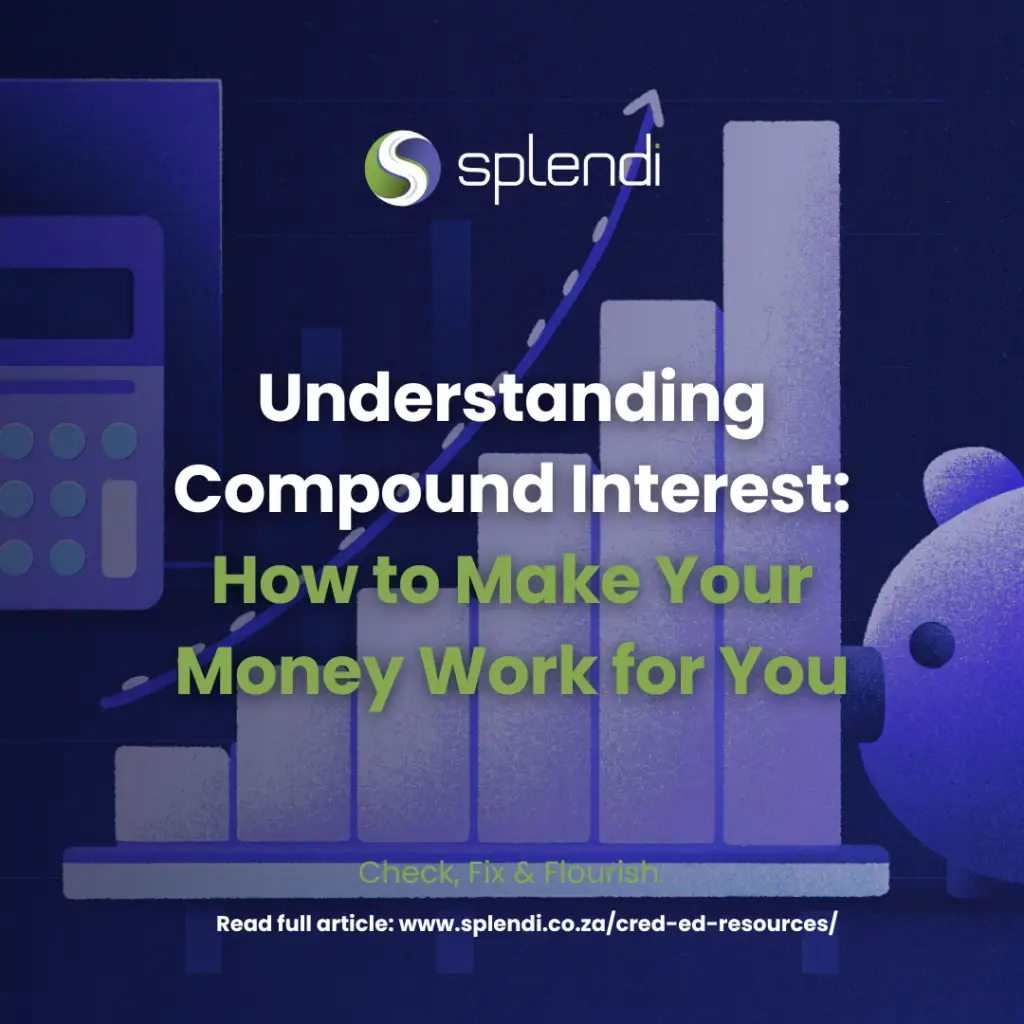Introduction
Have you ever wondered how some people manage to grow their wealth effortlessly? The secret often lies in compound interest—a financial principle that allows money to grow exponentially over time. Whether you’re saving for retirement, investing in stocks, or building an emergency fund, understanding how compound interest works can help you make smarter financial decisions. In this guide, we break down compound interest, how it works, and how you can leverage it to achieve long-term financial success.
What is Compound Interest?
Compound interest is the process of earning interest on both the money you invest (the principal) and the interest that accumulates over time. Unlike simple interest, which is calculated only on the initial amount, compound interest allows your wealth to grow faster because the interest you earn also generates additional interest.
Example: If you invest R10,000 at an annual interest rate of 10%, you earn R1,000 in the first year. In the second year, instead of earning interest only on the original R10,000, you earn interest on R11,000, leading to even higher returns over time.
The Power of Time in Compound Interest
One of the most important factors in compounding is time. The earlier you start investing, the more your money grows due to the snowball effect of compounding.
Scenario: Starting Early vs. Starting Late
Imagine two friends, Thabo and Lerato:
- Thabo starts investing R2,000 per month at age 25 and stops at 35 (10 years, total investment: R240,000). He leaves the money invested until retirement at 65.
- Lerato starts investing R2,000 per month at age 35 and continues until 65 (30 years, total investment: R720,000).
Assuming a 10% annual return, who will have more money by retirement? Surprisingly, Thabo, despite investing for only 10 years, will likely have more wealth due to the extra decade of compounding.
The Compound Interest Formula
The mathematical formula for compound interest is:
A = P(1 + r/n)^(nt)
Where:
- A = Final amount
- P = Initial principal (starting amount)
- r = Annual interest rate (decimal form)
- n = Number of times interest is compounded per year
- t = Number of years invested
Example: If you invest R10,000 at 8% annual interest, compounded annually for 20 years, your investment grows to R46,610—more than four times your initial deposit!
How to Make Compound Interest Work for You
1. Start Investing as Early as Possible
Even small amounts invested early can lead to significant returns. Don’t wait for the “perfect” moment to start.
2. Reinvest Your Earnings
Avoid withdrawing interest or dividends—let them compound for maximum growth.
3. Invest in High-Growth Assets
Stocks, ETFs, and retirement funds often provide better long-term compounding potential than savings accounts.
4. Make Regular Contributions
Consistently adding to your investments increases your compound growth potential.
5. Be Patient and Think Long-Term
The true power of compounding is unlocked over decades. The longer you stay invested, the greater your rewards.
Final Thoughts
Compound interest is one of the most powerful financial tools at your disposal. By understanding and leveraging it, you can grow your wealth effortlessly over time. Start early, stay consistent, and watch your money multiply with minimal effort. The best time to start was yesterday—the second-best time is today!




